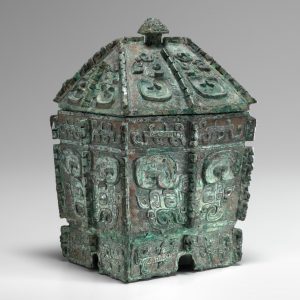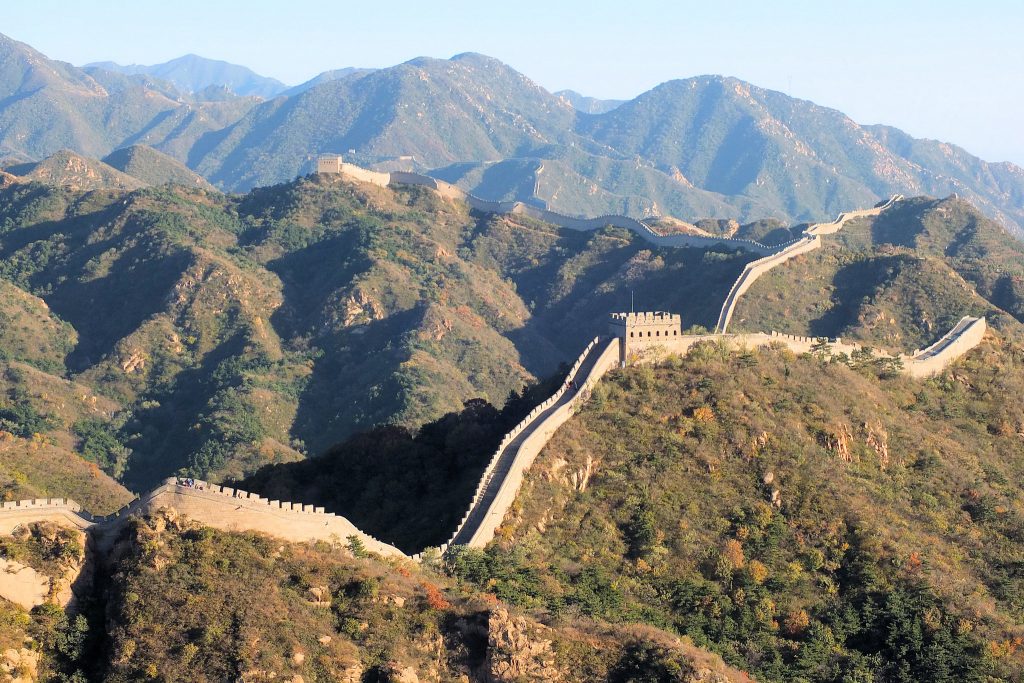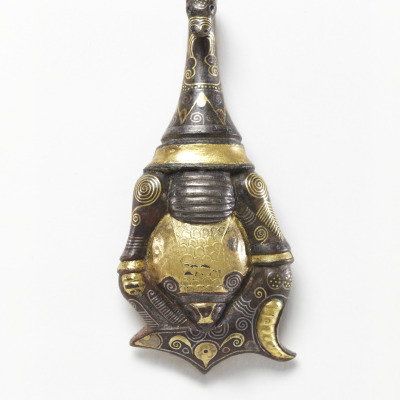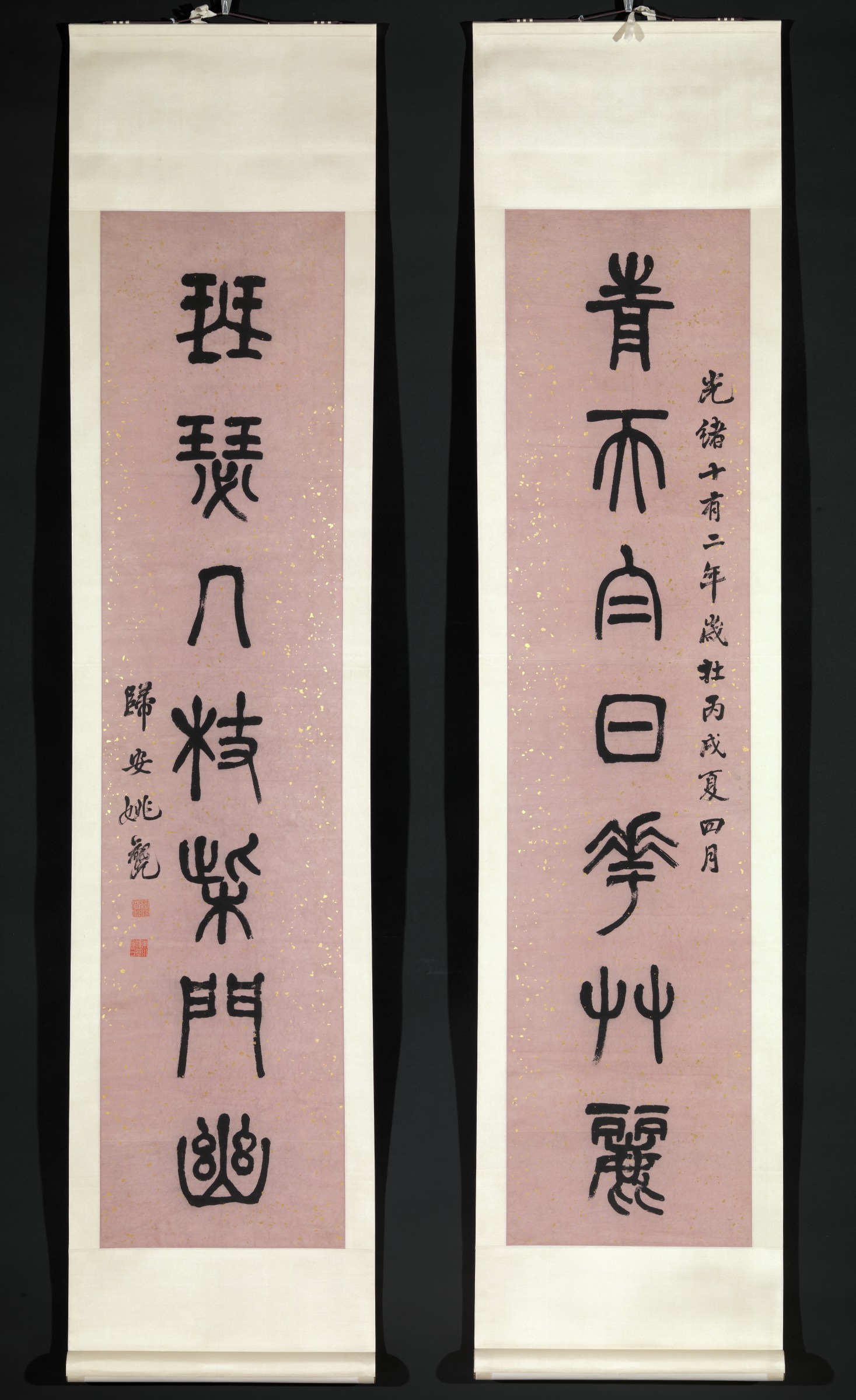
China: Interactive Exploration
Explore objects from ancient China and learn about the daily life and beliefs of the Chinese.
LOOKING, THINKING, AND LEARNING
This resource consists of two different types of looking, thinking, and learning activities. These activities call on your observation and thinking skills as you closely examine selected objects from Ancient China. The activities will explore the themes of daily life, trade, religion, and writing.
LOOK AT THIS!
Look at This activities provide close-up views with guiding questions and background information. What will you learn about what the ancient Chinese valued?
SURPRISE ME!
Surprise Me investigations offer pop-up hot spots on selected objects to reveal intriguing information about Chinese daily life and religion.

“Great Wall of China” by Keith Roper is licensed with CC BY 2.0.
Geography
China covers an exceptionally large area of land (over 3 million square miles) on the continent of Asia and is the third largest country on Earth. It is home to the Great Wall, the largest man-made structure on Earth. The climate of ancient China included four seasons, much like we have in North America. China has an immense coastline that is bordered by the Yellow Sea, East China Sea, and the South China Sea. The terrain of China is quite diverse and consists of the eastern alluvial plains, which are fairly flat landforms created by sediment deposited over a long period of time by rivers, the northern grasslands, the southern forest and hill regions, and the mountains and deserts of the west. In the west lies the formidable mountain ranges of the Kunlan, Tien Shan, and the Himalayas. Mount Everest is part of the Himalayas and is the highest peak in the world. To the north and west we also find vast deserts, such as the Gobi, Asia’s largest desert, and the Taklimakan.
These natural borders, as well as the Great Wall, kept ancient China isolated from the rest of Eurasia and protected it from foreign invaders that might want to take land and resources. These borders also meant that the Chinese would focus on developing an internal culture and would not seek external expansion for centuries.
Ancient Chinese civilization developed thousands of years ago along two vital river systems, the Huang He River in the northeast, and the Yangtze River in the south. Communities were built around these rivers because of their abundance of natural resources, which are resources that come from the earth. Rich fertile soil allowed for farming and encouraged irrigation to help crops grow. Fishing and hunting provided an ample food supply, and transportation by boat allowed people to travel for trade and to visit other settlements. And, of course, there was lots of water to drink!
Ancient Chinese civilization first began along the Huang He River. This region is where the earliest Chinese dynasties were based. The river starts in the mountains of Tibet and flows almost 3,000 miles to the Yellow Sea. It is nicknamed the Yellow River because of its yellow silt. This type of soil was ideal for growing wheat and millet. This region featured a cooler, drier climate, and flatter land than in southern China. Another nickname for the river is The Great Sorrow because it often floods, causing devastating destruction and death to millions of people over the centuries.
The Yangtze River originates in the Tibetan Plateau and flows almost 4,000 miles to the East China Sea. It is nicknamed the Long River and is the third largest river in the world (after the Nile and the Amazon). As time passed the Chinese people spread southward to the Yangtze River area. This region had a hot climate, with lots of rainfall and a hillier terrain than in the north. The fertile soil in this area made it ideal for growing rice and is where the ancient Chinese developed the method of terrace farming on hillsides.
Early Life/Burial Practices
The Shang dynasty (1600-1045 BC) began around 1600 BC along the Huang Ye River floodplains and is considered to be the first dynasty based on archaeological evidence. The Shang dynasty had many impressive achievements, among them the military use of the horse-drawn chariot and the development of large cities. These cities were home to royal palaces and temples, but also included industrial and craft production zones, where miners, stone and jade carvers, potters, bronze workers, and other artisans lived and worked. During the time of the Shang, the production and quality of bronze objects grew dramatically. Bronze items such as decorated cups, goblets, cauldrons and bells were used in sacrificial rituals to nature gods and royal ancestors and were also used in burials.The Shang believed in an afterlife and practiced ancestor worship, so it was thought that items from daily life should be buried with the dead. Archaeologists have discovered dozens of immense tombs of Shang kings and nobility that were filled with hundreds of exquisite bronze objects, as well as the skeletons of human beings and animals.
Because the Chinese believed in an afterlife, careful attention was taken when the dead were buried. They were buried not only with items they would need, but also with items of importance, such as objects made of bronze and precious stones like jade.
An example of one such burial item from the Shang dynasty is the following small jade pendant.
LOOK AT THIS! Pendant in Shape of Silkworm with Dragon Head
Pendant in Shape of Silkworm with Dragon Head, Chinese, Shang Dynasty, 13th-11th century BC, jade (nephrite), Adolph D. and Wilkins C. Williams Fund, 59.17.7
Daily Life
Burials and tombs can tell us not only a great deal about beliefs in the afterlife and ancient Chinese religion, but also about daily life. Since the afterlife was supposed to mirror life on earth, the deceased needed all the items they would have used while still alive. Items included in tombs and with burials tell us a great deal about how the ancient Chinese lived.
Bronze ritual vessels were often found in burials, particularly in the Shang Dynasty (1600-1045 BC) and made-up an important part of grave furnishings. Often modeled after clay vessels that served food and drinks to the living, the bronze vessels were for offering food and drinks to the deceased. These vessels demonstrate the importance the Chinese placed on the past and on ancestors as they were made for storing, preparing, and serving food and wine to ancestral spirits. These ancestors served an important role, not only because they were relatives, but also because they served as intercessors (those who helped communicate between the gods and the living).
Chinese families made such offerings to make the spirits of the dead happy and to provide them with the things they needed. The families did this so that they might help bestow blessings and good fortune upon their descendants.
LOOK AT THIS! Fang Yi (Wine Vessel)
Fang Yi, ca. 13th-11th century BC, Chinese, Late Shang Dynasty, Bronze, Adolph D. and Wilkins C. Williams Fund, 57.45.5a-b
The Chinese believed that the deceased must be provided with all the possessions they wish to accompany them in the afterlife, so ceramic replicas of everyday objects were buried in tombs with the dead. It was believed these familiar objects and possessions would provide comfort to the spirit of the deceased. Ceramic models of miniature furniture, houses, human figures, domestic animals, and kitchenware like stoves, bowls and cups made their first appearance in the funerary art of the Han period. Every detail of this miniature stove is accurate for the time.
Click on the pop-up hot spots on the image below. Each will tell you different facts about this replica of an ancient Chinese stove.
SURPRISE ME! Stove
Stove, 1st-2nd century AD, Chinese, Han Dynasty (206 BC-220 AD), glazed earthenware, Gift of Mrs. Price L. Rogers, 55.28.7
Trade and the Silk Road
The Silk Road was an ancient network of trade routes formally established by the Han Dynasty (202 BC – 220 AD) of Imperial China. Under the rule of Emperor Wu (ruling from 141 BC – 87 BC), who sought territorial expansion of China’s borders, China was able to establish a web of trade routes that would eventually stretch over 4,000 miles, linking China with parts of Central Asia, the Mediterranean, Africa, Europe, and South Asia. This network was called the Silk Road because silk was one of the most desired products that traveled from East to West. As goods were exchanged over these routes, technological knowledge, philosophical ideas, and artistic practices were also carried to distant places. Buddhism made its way from India to China via the Silk Road. Westbound camel caravans carried luxury items, including silk, precious tea, and ceramics, from Chang’an (present-day Xian, China) to Central Asia, and then traveled either south to India or farther west to the Mediterranean coasts. Various locations along the trade routes also had goods that might be traded. For example, Kashgar offered pack animals, dried fruit, herbs, and tea. Merchants in Ferghana, famous for its horses, also dealt in rugs, copper, and dried fruit and nuts. Eastbound traders brought treasured glass, rare wool, exotic spices, and gold and silver vessels to China.
LOOK AT THIS! Bactrian Camel
Bactrian Camel, 7th-10th century, Chinese, Tang Dynasty, 618-907 AD Earthenware with white glaze, Adolph D. and Wilkins C. Williams Fund, 51.12.2
Religion
Early Chinese religion was based on worshipping ancestors, other gods, and goddesses, particularly ones related to nature. For many hundreds of years, China was cut-off from other cultures due to its geographical features and the Great Wall of China. Once the Silk Road opened, China had contact with people from places like Africa, Rome and India. Other than goods, like silk and spices, ideas also travelled across this vast trade route. Religion travelled and was shared amongst different peoples. Buddhism was one such religion that made its way from India to China via the Silk Road.
Buddhism
Buddhism is a religion named after a man we now call Buddha (birth name, Siddhartha Gautama, before his renunciation). He lived in India in the 6th century BC, but his beliefs travelled along the Silk Road into China and many Chinese became Buddhist. Buddhism most likely came to China about the same time the Silk Road began, in the 1st century AD.
Buddhists believe in the cycle of life: a person is born, they live through life, they pass away, and then they are reborn again to repeat the cycle. Buddhists strive to end this cycle and attain freedom from constant rebirth. Buddhists try to end this suffering in a number of different ways; many try to achieve a state of enlightenment, or an understanding of the meaning of life which will end all suffering and rebirth. The Buddha taught people how to stop suffering, and therefore how to be truly happy.
Click on the pop-up hot spots on the image below. Each will tell you different facts about a Buddhist figure.
SURPRISE ME! Bodhisattva
Standing Bodhisattva, ca. 550 – 559, China, Northern Qi dynasty (550–577), limestone, Adolph D. and Wilkins C. Williams Fund, 56.9.2
Writing
Chinese is the oldest continuous writing system in the world. The first writing system in China was developed almost 3,500 years ago during the Late Shang dynasty (1300-1100 BC). The Shang created more than 4,5000 pictograph characters and would inscribe these characters on the bones of animals and turtle shells, known as oracle bones. Oracle bones were used to predict the future, to record oral divination performances, and to document events and activities, including warfare, the weather, and the selection of lucky days for ceremonies.
Over the centuries, these Chinese characters, known as hanzi, became simplified in form and were combined together to stand for sounds as well as words. Today we know this form of writing as calligraphy. Calligraphy is considered an art form by the Chinese and this reflects the importance of words in China. There are tens of thousands of characters in written Chinese!
The writing we see here was done long after writing began in China, but reflects the changes in style it went through over thousands of years. The script used on these scrolls is called seal script. Seal script is acknowledged as one of the oldest scripts in Chinese writing. This script was/is mainly used for the creation of inscriptions and seals within official and important documents. Scrolls, or rolled paper, can be rolled up and stored, or hung on the wall for decoration. Chinese writing should be read from top to bottom on these scrolls and they start on the right side to read.
Watch a calligrapher write Chinese characters!
Vocabulary
alluvial plains – mostly flat landforms created by sediment deposited over a long time period by one or more rivers coming from highland regions.
natural resource – resources that come from the earth.
culture – the customs, arts, social institutions, and achievements of a particular nation, people, or other social group.
expansion – to increase ones territory, power, wealth or influence.
irrigation – the supply of water to land or crops to help growth, typically by means of channels.
dynasty – lines of kings or emperors from a single family, following each other on the throne from generation to generation.
ancestor – people in your family that came before you, like your great grandparents and great, great grandparents.
sacrificial ritual – in some cultures, this is a ceremony in which a person or animal’s life was taken for a higher purpose, such as to satisfy gods.
bronze – a metal that is actually a combination of two other metals, copper and tin. These two metals are melted together to form bronze. The ancient Chinese used bronze to make many kinds of things, including ritual vessels, tools, and weapons.
oracle bones – inscribed animal bones and shells discovered in China and used originally in divination by the ancient Chinese, especially during the Shang dynasty.
divine/divination – the practice of seeking knowledge of the future or the unknown by supernatural means.
afterlife – existence or life after death.
intercessor – person or being who helped communicate between the gods and the living.
pictograph – individual characters that were pictures of things that represented an idea.
emperor – a single supreme ruler over an extensive group of areas like states or countries.
shroud – pieces of silk fabric that covered the face/body of the deceased.
calligraphy – the art of producing decorative handwriting or lettering with a pen or brush.

















